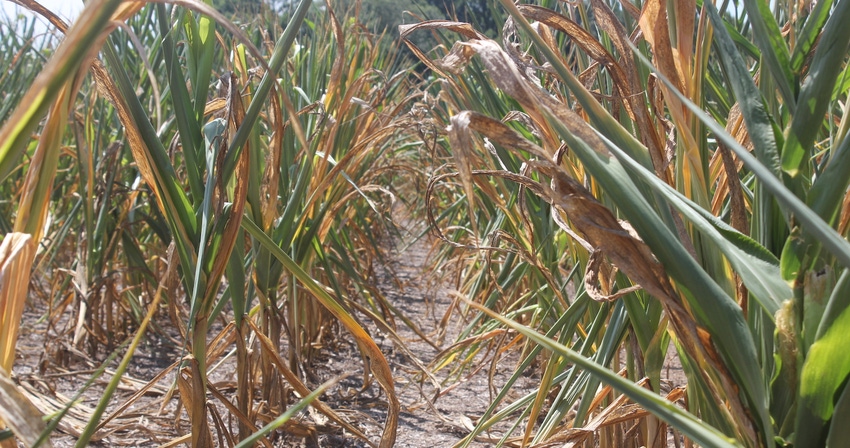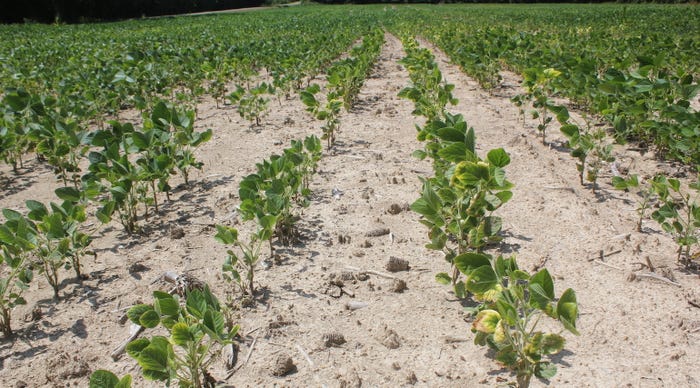
To say 2022 has been a challenging year for farming may be the biggest understatement of the year. Even without the supply chain disruptions and rising input costs, 2022 weather patterns have been brutal for Midsouth crops.
A cool, wet spring pushed planting back much later than intended for many growers in the northern part of our region. Then the rain turned off, and the heat came on at an unfortunate time for the late-planted crops.
The National Weather Service reported less than an inch of rain during the month of June for Memphis, Tenn., Tupelo, Miss., and Jonesboro, Ark. One of the driest June’s on record for each location. The July 21 U.S. Drought Monitor map showed most of the Midsouth falling withing the range of Abnormally Dry to Severe Drought.
Compounding lack of rainfall is the extreme heat.
“When stressors from heat and drought are added together, plants don't have ground water to draw from, so they close the stomata [leaf pores], and this makes the leaves become really hot,” said Ron Mittler, a plant scientist with the University of Missouri. “This is why the combination of drought and heat is really dangerous, because the leaf temperature is much higher than with a plant subjected to just heat. The change can be anywhere between two and four degrees, and that can make the difference between life and death.”
Unforgiving heat
In northern Mississippi, temperatures have hit triple digits nine times in June and July, including a string of five straight days with highs at 100 or more. Maximum temperature records have been broken five times over the past two months in the Tupelo area.
Parts of the Midsouth have spent multiple days under Excessive Heat Warnings where heat index temperatures reach 110-115 degrees. One grower in eastern Arkansas shared a screenshot from a weather app reporting heat index values at 121 degrees on July 21, 2022.
And in the Memphis area, when averaging June and July temperatures together, this was the hottest consecutive June and July in the past 100 years. The average temperature in the area for the two months combined was 85.15. That edges out June and July average temperatures of 2011 (84.85) and even the June and July of 1980 (84.8), which is often the standard for growers in the area when it comes to measuring hot summers.
The average maximum temperature for June and July in Memphis stood at 95.25 — almost five degrees above normal.
“The heat is what’s getting us,” said Casey Youngerman, a row crop farmer in western Tennessee, “particularly the nighttime temperatures. These plants don’t have any time to recover.”
Crop status
Youngerman said rainfall has been hit or miss on his farm.
“I have some ground that’s not going to be too good, I have some ground that’s going to be ok,” he said, “but nothing will be spectacular this year.”
Youngerman’s comments seem to echo those of many Midsouth producers who are just hoping for an average crop this season. The July 24 Crop Progress and Condition Report from USDA showed the highest percentage of Tennessee corn, cotton and soybeans in the “Fair” condition.
In a blog post from mid-July, Tyson Raper, cotton specialist with the University of Tennessee, wrote that Tennessee growers may be managing fewer fruiting positions than they’ve seen in the past 10 years.
“Cotton can compensate and surprise, but we need rainfall,” he wrote. “I would begin looking critically at all inputs moving forward and cut the ones that are not absolutely necessary.”
In Mississippi, the condition of the soybean crop in early August literally depends on where you stand, according to Extension specialists.

“We have some really good-looking irrigated soybeans that were planted in the optimum planting window and have made it to this point of the season with very few issues, other than extreme heat,” said Trent Irby, soybean specialist with the Mississippi State University Extension Service. “We even have some nonirrigated soybeans that could fall into that same description after catching several timely rains.
“Change to a different location,” he added, “and we have some irrigated soybeans that are way behind because of not being able to be planted early due to wet conditions and some nonirrigated soybeans that haven’t caught a rain in weeks.”
In Arkansas, the Midsouth state with the largest amount of irrigated acres, the most recent Crop Progress and Condition report is more encouraging, although hay crops and pastures are continuing to suffer.
Matt Miles, who farms in McGehee, Ark., is almost entirely irrigated. However, even with irrigation, extreme heat and nighttime lows that remain in the upper 70s are hurting yield potential.
“In my experience, those higher overnight temperatures can easily rob you of 5-15% of your yield in corn,” he said.
Still, he’s expecting to harvest a “decent” corn crop and a good soybean crop.
“With our corn and full season soybeans we planted early enough to escape some of that extreme heat that came at a critical time for most crops. Planting early was definitely an advantage, although many farmers didn’t have that opportunity this year.”
Miles said a challenge this summer was scheduling workers during a string of weeks when heat index values routinely topped 110 degrees.
“I don’t want to work in that kind of heat, and I don’t want to ask my employees to either,” he said. “We have tried to rearrange schedules so they are working at cooler times of the day.”
Miles started harvesting corn the first week of August. Although breaking out the harvest equipment doesn’t appear to be changing the weather patterns. While the latest U.S. Seasonal Drought Outlook has drought conditions improving for the Delta and into the hill country of Mississippi and Tennessee, the forecast predicts drought to persist through October for most of Arkansas and northern Louisiana. Above normal temperatures look to persist into the fall as well.
The long, hot summer isn’t over yet.
About the Author(s)
You May Also Like






